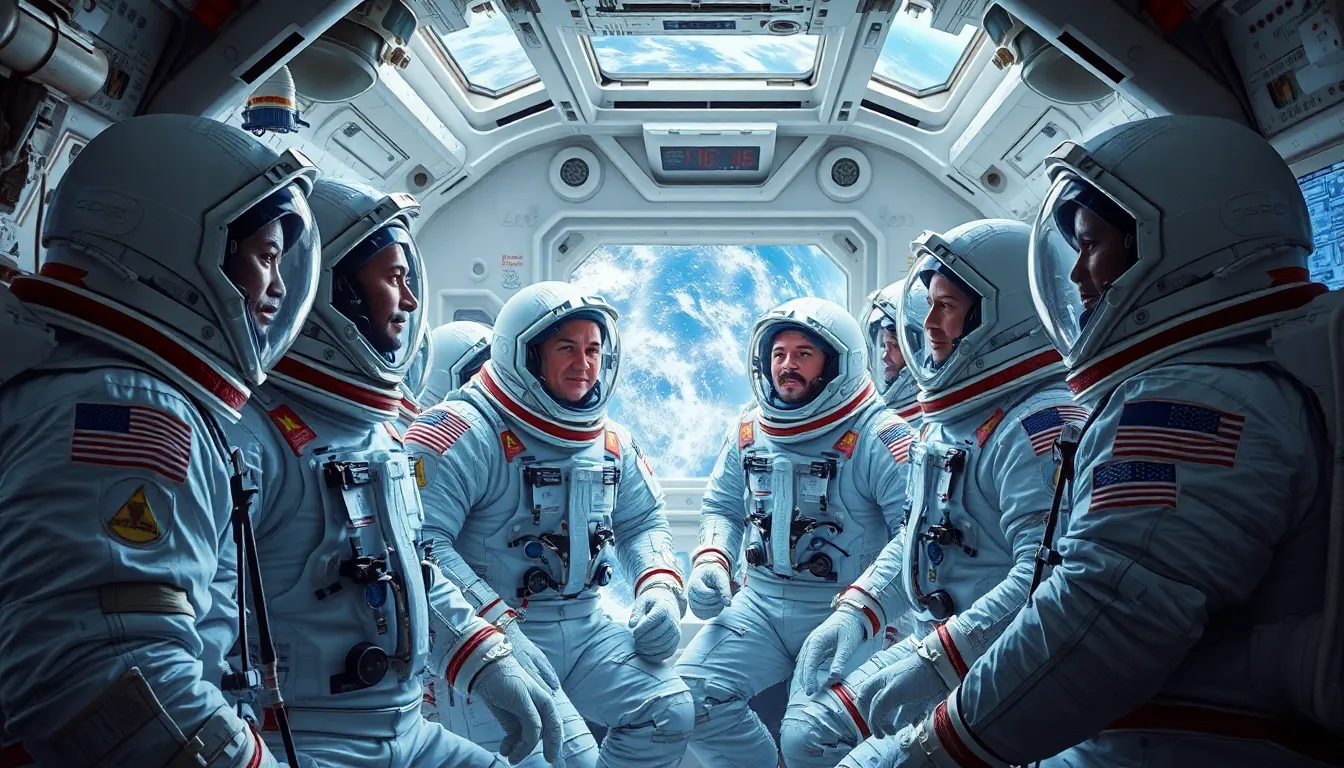Space: the final frontier. But just how far can we actually roam among the stars with the technology we’ve got today? While dreams of interstellar vacations and Martian colonies dance in our heads, reality often reminds us that our current spacecraft are more suited for short hops than long-haul journeys.
Imagine zipping around the solar system like it’s a cosmic road trip, but with some serious speed limits. With our best tech, we can reach Mars in a few months, but venturing beyond that? Well, let’s just say it’s a bit like trying to catch a bus that only shows up every few decades. So buckle up as we explore the limits of our spacefaring capabilities and discover just how far we can go before needing to stretch our legs—or maybe just grab a snack.
Table of Contents
ToggleCurrent Space Travel Technology
Current space travel technology relies on advanced systems and designs to enable exploration within our solar system. Limitations exist, but understanding existing technologies provides insights into future possibilities.
Rocket Propulsion Systems
Rocket propulsion systems primarily include chemical rockets and emerging alternatives like ion propulsion. Chemical rockets generate thrust by burning propellant, achieving speeds of approximately 36,000 kilometers per hour (22,000 miles per hour). Ion propulsion, while slower, offers greater efficiency by using electric fields to accelerate ions. NASA’s Dawn spacecraft utilized ion propulsion for its journey to the asteroid belt, having traveled around 2.7 billion kilometers (1.7 billion miles). As researchers develop new technologies, such as nuclear thermal propulsion and solar sails, faster travel to distant destinations becomes increasingly feasible.
Spacecraft Design and Durability
Spacecraft design prioritizes durability and safety during extended missions. Engineers utilize materials like aluminum and carbon fiber, ensuring lightweight structures that withstand extreme temperatures in space. Additionally, radiation shielding protects astronauts and equipment from harmful cosmic rays. NASA’s Orion spacecraft showcases advancements in design, featuring life support systems for deep space missions. Testing prototypes under various environmental conditions ensures reliability. The combination of innovative materials and robust systems allows for successful long-duration space travel, paving the way for human exploration beyond Mars.
Human Limitations in Space Travel

Human space travel faces significant limitations that hinder exploration beyond our planetary neighborhood. These constraints stem from biological and psychological factors that influence astronauts during missions.
Biological Constraints
Biological constraints play a crucial role in determining the distance humans can travel in space. Exposure to microgravity affects muscle mass and bone density, leading to potential health risks. Research indicates that astronauts can lose up to 1% of bone mass each month. Additionally, long-term space missions expose crew members to increased radiation levels, which raises the risk of cancer and other health issues. Advanced life support systems are essential for providing adequate nutrition and managing waste. Engineers focus on developing closed-loop ecological systems to sustain life over extended periods.
Psychological Factors
Psychological factors significantly impact human performance in space travel. Isolation and confinement can lead to stress and behavioral issues among crew members. A study showed that 35% of astronauts experienced psychological challenges during missions aboard the International Space Station. Effective communication with loved ones helps mitigate feelings of loneliness, promoting mental well-being. Crew dynamics also influence mission success, as strong interpersonal relationships enhance collaboration. Ongoing research explores strategies for mental health support to maintain crew morale on long-duration missions to destinations like Mars and beyond.
Distance Achievable with Current Missions
Current technology allows for meaningful exploration of space, focusing primarily on near-Earth destinations and Mars. Limitations exist, but missions have successfully expanded humanity’s reach.
Low Earth Orbit (LEO)
Low Earth Orbit remains the most accessible destination for space missions. Satellites orbit within this region, typically at altitudes between 160 and 2,000 kilometers. The International Space Station, situated in LEO, exemplifies human presence and activity in space. Crewed missions can last several months, supporting research in microgravity. Parameters for travel in this zone emphasize quick turnaround times for resupply and personnel changeovers, allowing multiple launches each year. Rapid advancements in reusable rocket technology, like those seen with SpaceX’s Falcon 9, continue to enhance access to LEO, reducing costs and increasing flight frequency.
Mars Missions
Missions to Mars represent a significant leap beyond low Earth orbit. Spacecraft typically take about six to nine months to reach the red planet, covering a distance of approximately 225 million kilometers at closest approach. NASA’s Perseverance rover exemplifies current exploration capabilities, conducting advanced scientific experiments on Mars’ surface. Future crewed missions face numerous challenges, including life support and habitat sustainability. Technologies being developed aim to support long-duration stays, targeting potential missions by the late 2030s or early 2040s. As robotic missions lay the groundwork, human exploration remains the ultimate goal for Mars, driving advances in propulsion and mission planning.
Future Prospects and Technologies
Innovative concepts and advanced technologies drive the future of space travel. Exploration extends beyond Mars, catering to aspirations of interstellar travel.
Conceptual Spacecraft
NASA’s concepts for spacecraft envision advanced designs capable of deeper space exploration. One example includes the Interstellar Probe, which aims to reach the heliopause within a decade. The design prioritizes life support and sustainability. Additionally, concepts like the Project Orion spacecraft propose nuclear propulsion for faster travel to asteroids and beyond. These spacecraft utilize advanced materials for durability amid harsh environments. Concepts also integrate systems to minimize radiation exposure, enhancing astronaut safety. Recent explorations into artificial gravity could mitigate health issues associated with long-duration missions. Human factors are critical, influencing the creation of habitats that support psychological well-being during extended voyages.
Advanced Propulsion Methods
Various propulsion technologies emerge from ongoing research, aiming to revolutionize space travel. Solar sails harness sunlight for propulsion, representing a promising direction for deep space missions. Electromagnetic propulsion, like the breakthrough in photonic propulsion, shows significant potential for increasing speed. Fusion propulsion holds the promise of reducing travel time to distant destinations, though it remains largely theoretical. Additionally, advancements in ion propulsion systems enhance efficiency for long missions through the solar system. Developments in these technologies can pave the way for practical crewed exploration beyond Mars. Striving for progress in this field could lead to sustainable and manageable missions within the next few decades.
Current space travel technology presents both remarkable achievements and significant challenges. While missions to Mars are becoming more feasible advancements in propulsion and spacecraft design pave the way for deeper exploration. The journey to distant worlds requires overcoming human limitations and developing sustainable life support systems.
As technology continues to evolve innovative concepts like nuclear propulsion and solar sails could redefine our capabilities. The dream of interstellar travel might not be as distant as it seems. With ongoing research and development the potential for humanity to explore beyond our solar system remains an exciting frontier. The future of space exploration holds promise as scientists and engineers strive to push the boundaries of what’s possible.





